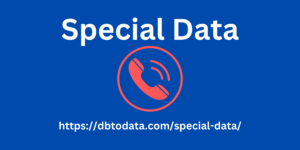|
|
After responsive websites, i.e. optimized to guarantee navigation from smartphones and tablets, it is the turn of Progressive Web Apps or simply PWAs , which represent a real revolution in the applications market.How to briefly define the Progressive Web App? Simply like the mobile version of a website, a modern offline web application created for mobile devices and today fully capable of competing with traditional apps.The main characteristic of an app of this type is precisely that of being Progressive, i.e. designed for everyone , regardless of the browser used. The result is an unparalleled user experience , another fundamental peculiarity without which the Progressive Web App would have no reason to exist and which can be defined as the focal point of every PWA.
This image is an example of a Progressive Web App just launched on Special Data the marketOn the other hand, the web of the future is decidedly mobile -oriented . It is no coincidence that Google is favoring apps with more refined mobile versions in its algorithms. A trend that slowly, but perhaps not too much, will certainly lead to a revolution in the way of using the network of which PWAs represent the new frontiers.Each browser vendor has understood this very well to the point that they are all working daily to implement all the technology necessary to guarantee its best functioning.Main features and technologies of PWAsProgressive Web Apps work exactly like a traditional app but, compared to them, they are completely autonomous in their operation.A PWA is installed very easily as it is not necessary to refer to any store. Simply, when users access the sites they receive a notification inviting them, if they want, to download the relevant PWA directly from the browser. Therefore, there are very few steps and navigation is direct .There are three key elements of a Progressive Web App: the App Shell, the Service Worker and the JSON Manifest.– The App Shell represents the actual skeleton of the app within which the data will be disseminated. It contains every main element of the user interface and every component essential for the correct functioning of the app.

On the user's second access to the application, thanks to the fact that each element has been saved locally and that the contents are dynamically retrieved from an API, the app loads in a very short time.– The Service Worker is a key element of PWAs. Very important for receiving push notifications , the Server Worker works to modify the behavior of the app by occupying a strategic position: that between the browser and the app itself.Technically this is a script that the browser runs in the background. A bit like a proxy server, it places itself between the browser and the network, stores page data in the cache and thus improves the subsequent user experience which is faster and more engaging.– The JSON Manifest is a file that contains all the metadata necessary for indexing the app on a store or for saving the same app on the users' Home screen.
|
|